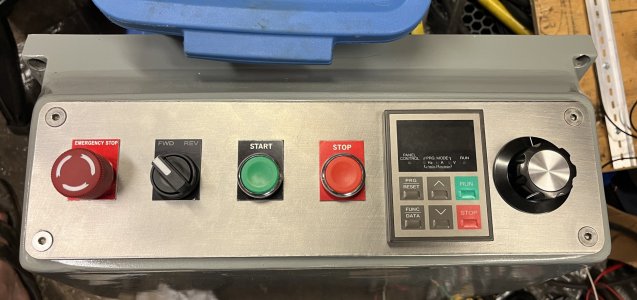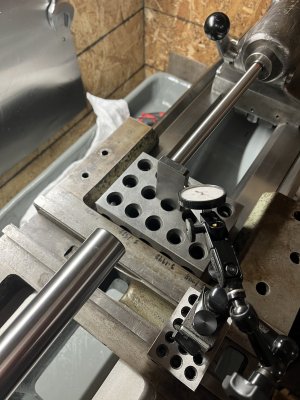Rauce
Ultra Member
I figured out the servo issue before clearpath got back to me.
The drive system has slop in it because of there’s a dog clutch in the countershaft assembly where you switch between high and low range speeds. I think this was tricking the servo into tuning itself incorrectly. I re-ran the auto tuning with unidirectional movement and it significantly better. Almost perfect at low speeds but still a little unstable and noisy at higher speeds.
Then I spent some time doing calculations based on the torque curve and rpm range of the servo and compared it with the 3ph motor I had before.
The 3ph motor gives me a wider useful rpm range (it’s a 1800rpm motor and I’m assuming the maximum I would over speed it is 2x nominal). The servo tops out at 2400rpm. The servo has slightly better torque at low rpm (sub 500rpm) but the low range 8:1 back gear makes this kind of irrelevant. In short the 3ph motor will give me more power at the lower end of high speed setting if I use the right size sheave while still reaching the original maximum speed of the machine. As a bonus it will not require any more fussing around with a computer.
Not sure yet if I’ll hold onto the servo for a future project or sell it.
The drive system has slop in it because of there’s a dog clutch in the countershaft assembly where you switch between high and low range speeds. I think this was tricking the servo into tuning itself incorrectly. I re-ran the auto tuning with unidirectional movement and it significantly better. Almost perfect at low speeds but still a little unstable and noisy at higher speeds.
Then I spent some time doing calculations based on the torque curve and rpm range of the servo and compared it with the 3ph motor I had before.
The 3ph motor gives me a wider useful rpm range (it’s a 1800rpm motor and I’m assuming the maximum I would over speed it is 2x nominal). The servo tops out at 2400rpm. The servo has slightly better torque at low rpm (sub 500rpm) but the low range 8:1 back gear makes this kind of irrelevant. In short the 3ph motor will give me more power at the lower end of high speed setting if I use the right size sheave while still reaching the original maximum speed of the machine. As a bonus it will not require any more fussing around with a computer.
Not sure yet if I’ll hold onto the servo for a future project or sell it.









